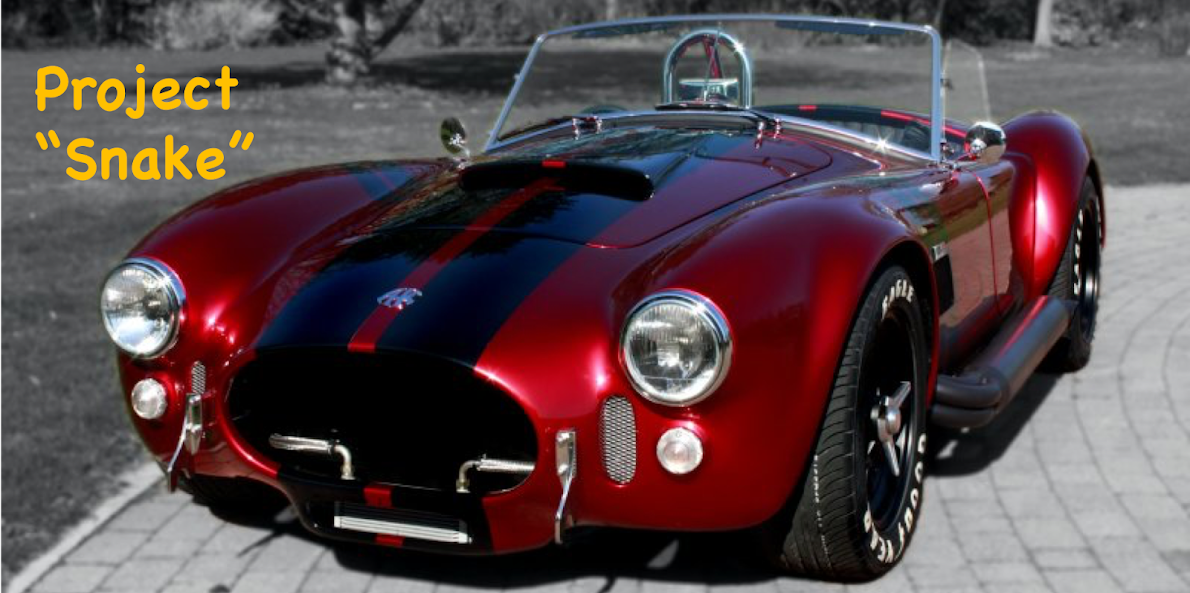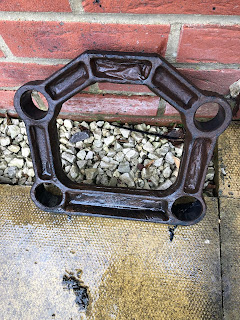Time to break out the sand blaster. Oh wait - I don't have a sand blaster.
Again the internet is a wonderful place and after some research I found plans for a DIY sand blaster. Actually I found several plans for full blown blasting cabinets, which was not really what I wanted. I needed sand blasting on a budget!
First thing on the shopping list was a cheap air gun; this one was less than a tenner on Amazon.
Unfortunately this air gun came with a male 1/4inch BSP outlet. The thread into the gun is actually smaller than 1/4inch so I couldn't just remove it and screw in a male 1/4inch airline connector. No I needed to buy a whip hose (another tenner - budget blown!) with a 1/4inch female connector at one end and a quick release male connector at the other.
 |
| Thread in airgun is smaller than 1/4inch BSP.... |
 |
| ....requiring purchase of an additional whip hose |
Then it was time for a drink. Actually I just needed the bottle and it needed to be one of the ones made of slightly harder plastic than your average drinks bottle. This Greggs orange juice bottle fitted the bill perfectly, although I did also need to purchase a southern fried chicken baguette and a couple of steak bakes to go with the drink......
 |
| One bottle - empty and washed!! |
First thing to do was to mark a section on the top of the 100mm long nozzle, roughly in the middle of the bottle opening.
Then with a dremel and cutting disk, I carefully cut through the top of the tube just enough to make an opening in the tube.
Next step was to remove the retaining ring off the bottle lid with a pair of cutters and then to drill a hole through the top of the bottle just big enough to pass the nozzle through with a bit of interference fit.
Then it was simply a matter of screwing the nozzle back onto the air gun, filling the bottle with sand (I used kiln dried paving sand), putting the lid on and hooking it up to the air compressor.
I used a plastic crate as a make-shift blasting cabinet (mainly I thought to prevent covering my driveway with sand), set the air regulator to 100psi and pulled the trigger.....
Surprisingly it did actually work. Although the first attempt did attempt did result in a small sand storm blasting back of the plastic crate and abrading any part of my exposed skin it could find!
HEALTH AND SAFETY TIP - when sand blasting make sure you wear gloves and eye protection. The sand goes everywhere and at 100psi makes short work of removing skin! I also found it necessary to wrap a scarf round my face and do my best Bedouin impression to avoid lasting damage to my mediocre good looks.
 |
| Grab your blasters! |
The eagle eyed among you will note that the picture above is actually of Sand Blaster Mk2. The opening I cut into the nozzle of Mk 1 was too large for the kiln dried sand which was so fine it just poured out of the nozzle when angled downwards. So I used the 200mm nozzle from the air gun kit and cut a much smaller slot. I will keep Mk1 and maybe try it with some proper blasting media (either grit or walnut shells) which may be slightly coarser.
 |
| Mk2 - smaller opening in nozzle tube |
The blaster is actually quite effective and removed all traces of remaining paint off the wishbone tie. Its obviously not as effective as a proper sand blaster and it took a bit of time (not helped by needing to stop every now and then to allow my 2hp compressor to try and keep up!!) but for a budget sand blaster I think its a tick in the box!
 |
| All traces of paint around bushes and in corners of recess removed with Blaster Mk 2! |
I still had to sweep up all the sand off the drive though....


























